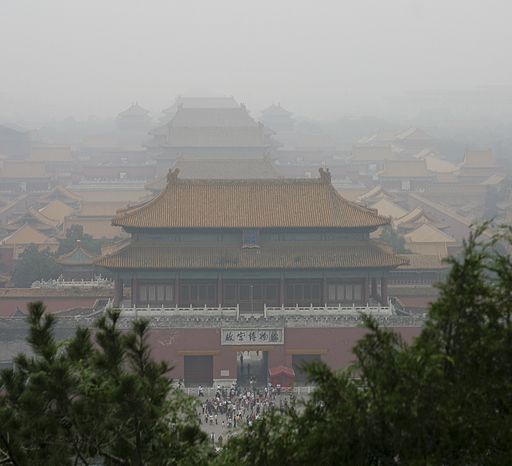Chinese authorities boost smog alert level in Beijing
The authorities in the Chinese capital, Beijing, have issued their highest smog warning so far this year. The "orange level" alert declared on Sunday (November 29) is the second highest possible, requiring factories to cut production. Visibility has fallen to a few hundred metres in some places as well.
Pollution readings in parts of the city on Sunday reached about 17 times the level considered safe by the World Health Organisation (WHO). Over at the US Embassy in Beijing, the air pollution monitor reported that the intensity of poisonous, tiny particles reached more than 400 micrograms per cubic metre. The WHO considers 25 micrograms per cubic metre to be a safe level.

Coal-powered industries and heating systems, as well as dust from construction sites, all contribute to the smog which has been exacerbated by humidity and a lack of wind in Beijing. While the declaration of this orange level alert requires industrial plants to reduce or shut down production, building sites are also not allowed to transport materials or waste and heavy-duty trucks are banned from the city's roads.
 Air pollution caused by industrial plants
Air pollution caused by industrial plants
Air pollution is a chronic health-risk for those living and working in the capital and other major Chinese cities. Earlier this year China's environment ministry announced that only eight out of the country's 74 biggest cities had passed the government's basic air quality standards in 2014. Most of the cities found to have the worst air were in the northeast, which is home to many heavy industries including coal mining.
 Beijing air after rain (left) and a smoggy day (right)
Beijing air after rain (left) and a smoggy day (right)
(All images - credit: Wikimedia Commons under Creative Commons licence)





